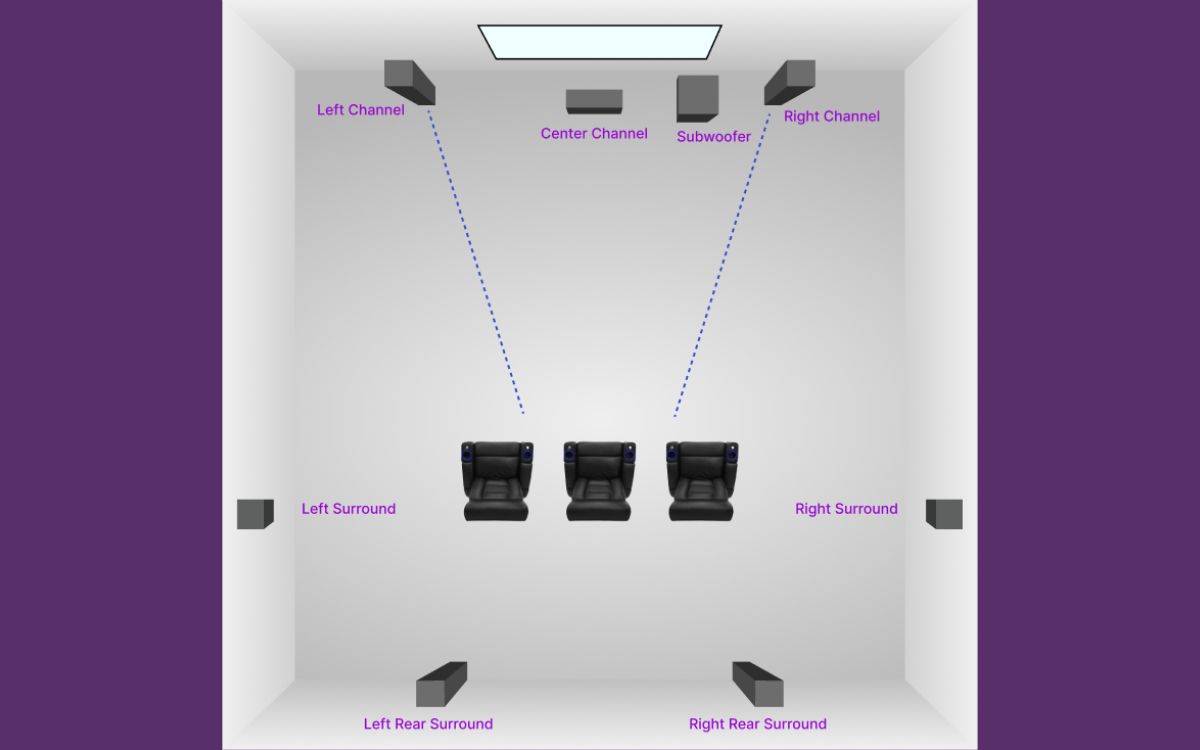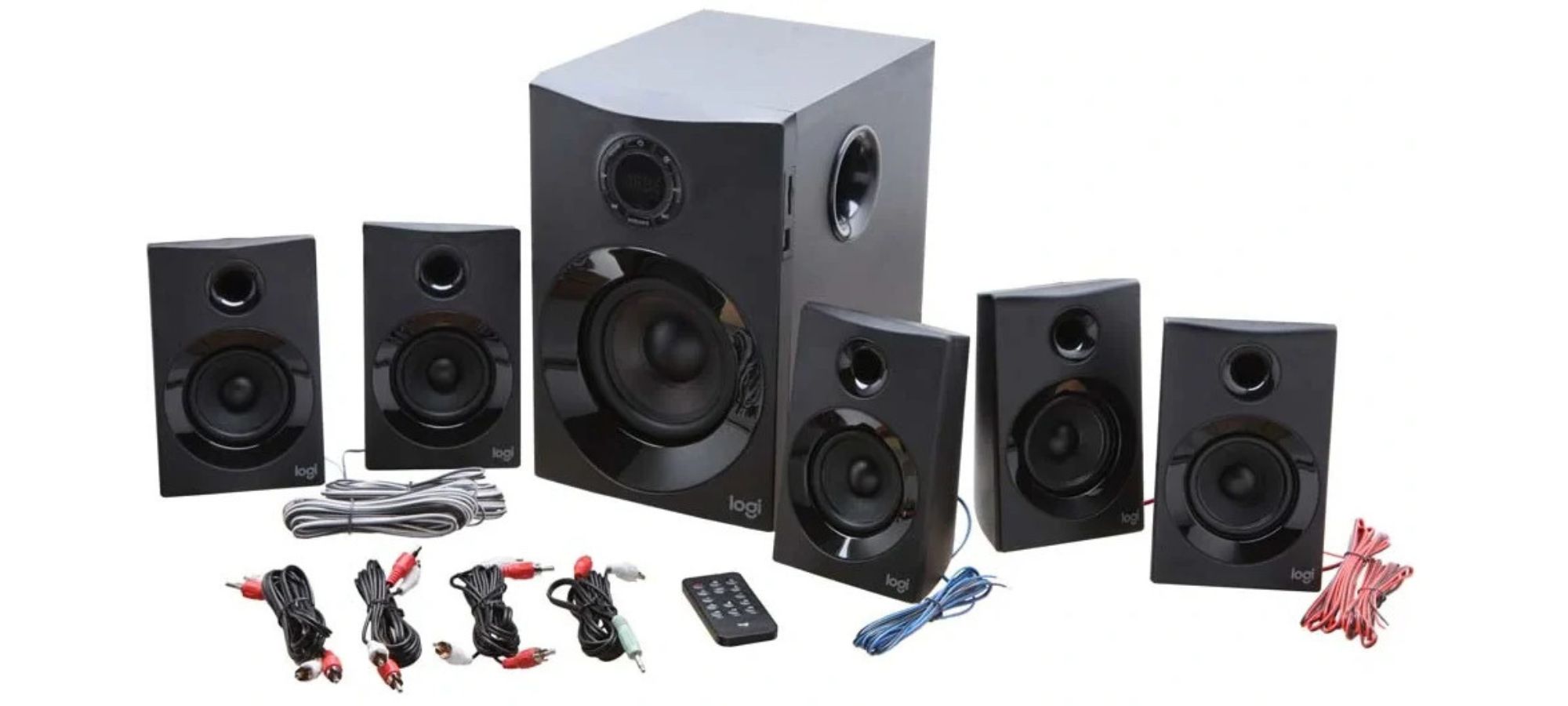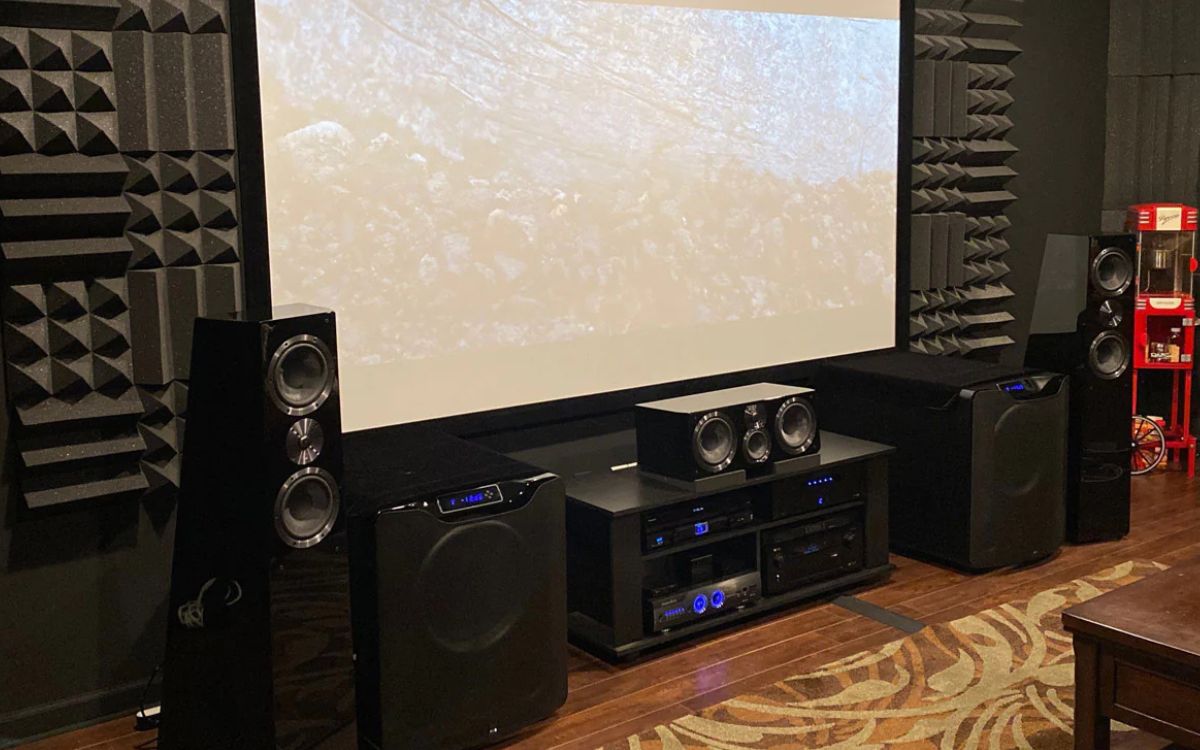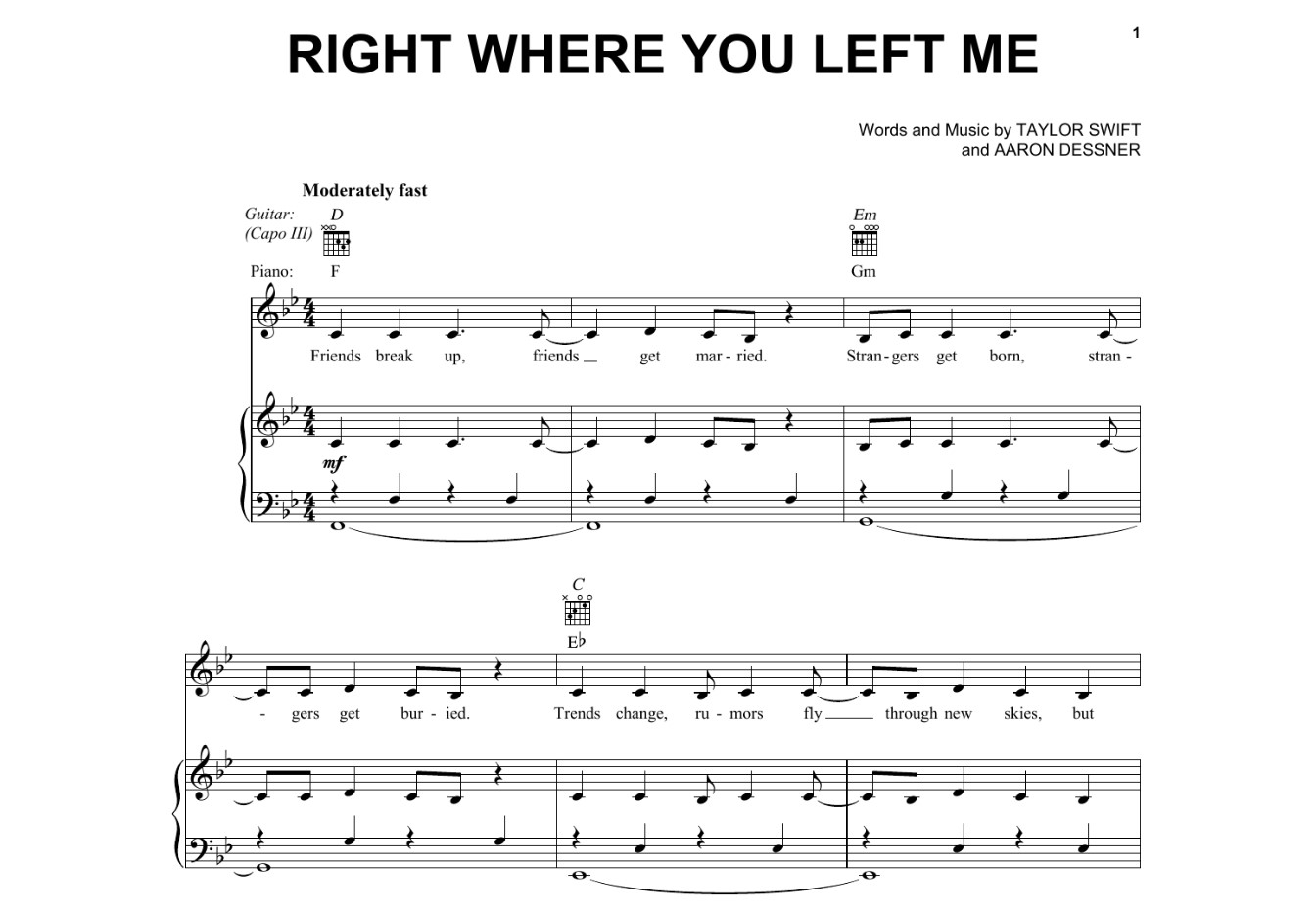Home>Production & Technology>Surround Sound>Which Is Left And Which Is Right For Surround Sound System Speakers


Surround Sound
Which Is Left And Which Is Right For Surround Sound System Speakers
Published: December 23, 2023
Looking for the perfect setup for your surround sound system? Learn which speakers go on the left and right for an immersive audio experience.
(Many of the links in this article redirect to a specific reviewed product. Your purchase of these products through affiliate links helps to generate commission for AudioLover.com, at no extra cost. Learn more)
Table of Contents
Introduction
Surround sound systems have revolutionized the way we experience audio in our homes. With their ability to create an immersive audio environment, they have become a popular choice for home theaters and entertainment setups. One of the key components of a surround sound system is the speakers.
In a surround sound system, the speakers are strategically placed around the room to create a three-dimensional sound experience. They work together to produce a sense of depth, dimension, and movement in sound, enhancing the overall audio quality and immersing the listener in the movie, music, or game.
While there are multiple types of speakers in a surround sound system, such as center channel speakers, subwoofers, and surround speakers, the left and right speakers play a critical role. They form the foundation of the system, providing the stereo imaging and delivering the bulk of the audio content.
In this article, we will explore the importance of left and right speakers in a surround sound system and discuss their placement and function. We will also delve into the factors to consider when deciding which speaker is left and which is right in your setup.
So, whether you are setting up a new surround sound system or looking to optimize your existing one, let’s dive in and discover the world of left and right speakers for surround sound systems.
Understanding Surround Sound Systems
A surround sound system is designed to create a realistic and immersive audio experience by reproducing audio from multiple directions. It aims to replicate the way sound is experienced in a movie theater or concert hall, creating a sense of depth, space, and movement in the audio. This is achieved by using multiple speakers strategically placed around the room.
The most common surround sound systems are based on the 5.1 configuration, which consists of five main speakers and a subwoofer. The main speakers include a center channel speaker, left and right speakers, and two surround speakers. The subwoofer is responsible for handling the low-frequency sounds, providing deep and powerful bass.
The center channel speaker is placed above or below the display screen and is responsible for reproducing dialogue and other central sounds in movies or TV shows. The left and right speakers are positioned on the sides of the display, providing stereo imaging and delivering the main audio content. The surround speakers are placed behind or to the sides of the listener, creating a sense of envelopment and enhancing the overall surround sound effect.
Surround sound systems can also include additional speakers, such as height speakers or overhead speakers, to create more immersive and realistic audio experiences. These speakers add another dimension to the sound, making it appear to come from above or around the listener.
When setting up a surround sound system, it is crucial to consider the acoustics of the room and the placement of the speakers. Proper speaker placement ensures optimal sound distribution and balance, creating an accurate and immersive audio experience. The positioning of the left and right speakers, in particular, plays a significant role in achieving a spacious and accurate stereo image.
Now that we have a basic understanding of surround sound systems, let’s explore the different types of surround sound speakers and their specific roles in enhancing the audio experience in the next section.
Types of Surround Sound Speakers
When it comes to surround sound systems, there are several types of speakers that work together to create an immersive audio experience. Let’s take a closer look at each type:
- Center Channel Speaker: The center channel speaker is a crucial component of a surround sound system. It is responsible for reproducing dialogue and central sound effects in movies and TV shows. Placed either above or below the display screen, the center channel speaker ensures clear and balanced sound, making the dialogue sound like it’s coming directly from the screen.
- Left and Right Speakers: The left and right speakers, also known as front speakers, deliver the bulk of the audio content in a surround sound system. They create stereo imaging, providing a sense of depth and dimension to the audio. These speakers are typically placed on either side of the display, facing the listener. They play a crucial role in creating a balanced and immersive soundstage.
- Surround Speakers: Surround speakers are responsible for creating a sense of envelopment and spatial audio. These speakers are placed behind or to the sides of the listener, filling the room with ambient sounds and enhancing the overall surround sound experience. They provide directional audio cues and help to immerse the listener in the audio content.
- Subwoofer: The subwoofer is dedicated to handling low-frequency sounds or bass. It adds depth and impact to the audio, allowing you to feel the rumble of explosions or the thump of a bass guitar. The subwoofer can be placed anywhere in the room as bass frequencies are non-directional.
- Height or Overhead Speakers: Some advanced surround sound systems feature height or overhead speakers. These speakers add an additional dimension to the audio experience, creating the illusion of sound coming from above. They are typically placed near or above the listener to simulate sounds like raindrops or helicopters flying overhead.
The combination of these different types of speakers in a surround sound system creates a balanced and immersive audio environment. Proper placement and calibration are essential to ensure that each speaker functions optimally and delivers the intended audio experience. In the next section, we will focus specifically on the importance and placement of the left and right speakers.
Placement of Surround Sound Speakers
Proper placement of surround sound speakers is crucial to achieving optimal audio performance and creating a realistic and immersive soundstage. Each speaker has a specific role, and its positioning determines how effectively it can deliver its intended sound. Here are some general guidelines for speaker placement in a surround sound system:
- Center Channel Speaker: The center channel speaker is typically placed above or below the display screen. It should be aimed towards the listener at ear level to ensure clear and intelligible dialogue.
- Left and Right Speakers: The left and right speakers should be positioned on either side of the display, facing the listener. They should be placed at an equal distance from the center channel speaker and at ear level for the best stereo imaging and soundstage.
- Surround Speakers: The surround speakers can be placed to the sides or slightly behind the listener. If possible, aim them towards the listening area to create an enveloping sound effect. The distance between the surround speakers and the listener should be roughly the same to maintain balance in the audio.
- Subwoofer: The subwoofer is non-directional, so it can be placed anywhere in the room where it delivers the best bass response. Experiment with different locations to find the spot that provides a balanced and powerful low-frequency performance.
- Height or Overhead Speakers: If your surround sound system includes height or overhead speakers, they should be placed above the listener. Aim them downward towards the listening area to create a convincing sense of sound coming from above. These speakers are typically mounted on the walls or ceilings for best results.
Keep in mind that the room’s acoustics and layout can also influence speaker placement. It’s important to avoid placing speakers too close to walls or corners, as this can cause reflections and distortions in the sound. Experimentation and fine-tuning may be required to find the optimal placement that suits your room and delivers the desired audio experience.
Remember to refer to the manufacturer’s guidelines and recommendations for speaker placement specific to your surround sound system. Additionally, investing in quality speaker stands, wall mounts, or ceiling brackets can help achieve precise and secure positioning for your speakers.
Now that we understand the importance of speaker placement in a surround sound system, let’s move on to the next section where we discuss the significance of the left and right speakers in creating an immersive audio experience.
Left and Right Speakers in a Surround Sound System
The left and right speakers in a surround sound system play a critical role in reproducing the stereo audio content and creating a spacious soundstage. These speakers are responsible for delivering the majority of the audio content, including music, sound effects, and ambient sounds in movies, music, and games.
The left and right speakers work together to create a stereo image, where sound appears to originate from specific locations across the front of the listener. This stereo imaging enhances the sense of depth and realism in the audio, making it feel like the sound is coming from different directions.
By positioning the left and right speakers on either side of the display or listening area, the soundstage expands beyond a listener’s ears. The speakers should ideally be placed at the same distance from the listening position and directed towards the listener’s ears for an accurate stereo image.
When properly calibrated and positioned, the left and right speakers can create a wide and immersive soundstage, making it feel like the action is happening all around the listener. This adds depth and dimension to the audio experience, enhancing the enjoyment of movies, music, and games.
It’s important to note that the left and right speakers are not solely responsible for the surround sound effect. The surround speakers, in conjunction with the left and right speakers, contribute to the overall surround sound experience by creating a sense of envelopment and immersing the listener in a three-dimensional audio environment.
Furthermore, the left and right speakers also work in tandem with the center channel speaker, which is responsible for reproducing dialogue and central sounds. The center channel speaker plays a crucial role in creating a balanced and clear sound, allowing dialogue and central audio elements to be accurately positioned in the soundstage.
In summary, the left and right speakers form the foundation of a surround sound system, providing stereo imaging and delivering the primary audio content. Together with the surround speakers and the center channel speaker, they create an immersive and captivating audio experience. Understanding their significance and proper positioning is essential when setting up a surround sound system.
Next, we will explore the factors to consider when deciding which speaker is left and which is right in your surround sound system setup.
Factors to Consider When Deciding Left and Right Speakers
When setting up your surround sound system, there are several factors to consider when deciding which speaker should be placed as the left or right speaker. While there are no hard and fast rules, the following factors can help guide your decision:
- Speaker Design: Consider the design of the speakers themselves. Many speakers are designed asymmetrically, with different driver arrangements or port placements on the front. Aligning the speakers in a consistent manner can help maintain a balanced aesthetic and sound performance.
- Placement Flexibility: Take into account the room’s layout and any limitations or constraints you may face. This includes furniture, windows, or other obstacles that could impact the speaker placement. Choose the left and right speaker positions that allow for optimal and unobstructed sound projection towards the listening area.
- Listening Position: Consider the location of the primary listening position in the room. You want to ensure that the left and right speakers are positioned symmetrically around the central listening area. This helps create a balanced stereo image and an immersive audio experience for the listener.
- Room Acoustics: Assess the room’s acoustics, including its size, shape, and any acoustic treatments present. These factors can influence the way sound waves interact with the space. Adjust the positioning of the left and right speakers accordingly to optimize sound distribution and minimize any negative acoustic effects.
- Personal Preference: Ultimately, personal preference plays a role in deciding which speaker is left and which is right. Some individuals may prefer a specific speaker placement based on their listening habits, room setup, or audio preferences. Trust your ears and experiment with different configurations to find what sounds best to you.
Remember, the key objective is to create a balanced and immersive soundstage where the audio appears to come from different directions. The left and right speakers should work in harmony to deliver an engaging audio experience. Taking these factors into consideration will help you make an informed decision when determining the placement of the left and right speakers in your surround sound system.
With the left and right speakers properly positioned, you can enjoy a rich and dynamic sound experience that brings your movies, music, and games to life.
In the next section, we will summarize the importance of the left and right speakers in a surround sound system and conclude our discussion on surround sound.
Conclusion
Surround sound systems have revolutionized the way we experience audio in our homes, and the left and right speakers play a crucial role in delivering an immersive and captivating sound experience. These speakers, along with the center channel speaker and surround speakers, work together to create a realistic and spacious audio environment.
Understanding the types of speakers in a surround sound system and their specific roles helps us appreciate the importance of proper speaker placement. By positioning the center channel speaker, left and right speakers, surround speakers, and subwoofer correctly, we can optimize the sound distribution and achieve a balanced and enveloping audio performance.
When deciding which speaker should be placed as the left or right speaker, factors such as speaker design, placement flexibility, listening position, room acoustics, and personal preference should be considered. These factors help ensure a symmetrical and balanced audio experience that caters to your specific room and listening preferences.
In conclusion, the left and right speakers are critical components of a surround sound system, providing stereo imaging and delivering the majority of the audio content. They work in harmony with the other speakers to create a realistic and immersive soundstage, enhancing your enjoyment of movies, music, and games.
So, whether you are setting up a new surround sound system or optimizing your existing one, pay careful attention to the placement and configuration of your left and right speakers. Explore different speaker positions, experiment with speaker calibration, and fine-tune your setup to achieve the best results.
Immerse yourself in the world of surround sound and elevate your audio experience to new heights with the proper placement and utilization of the left and right speakers in your setup.











